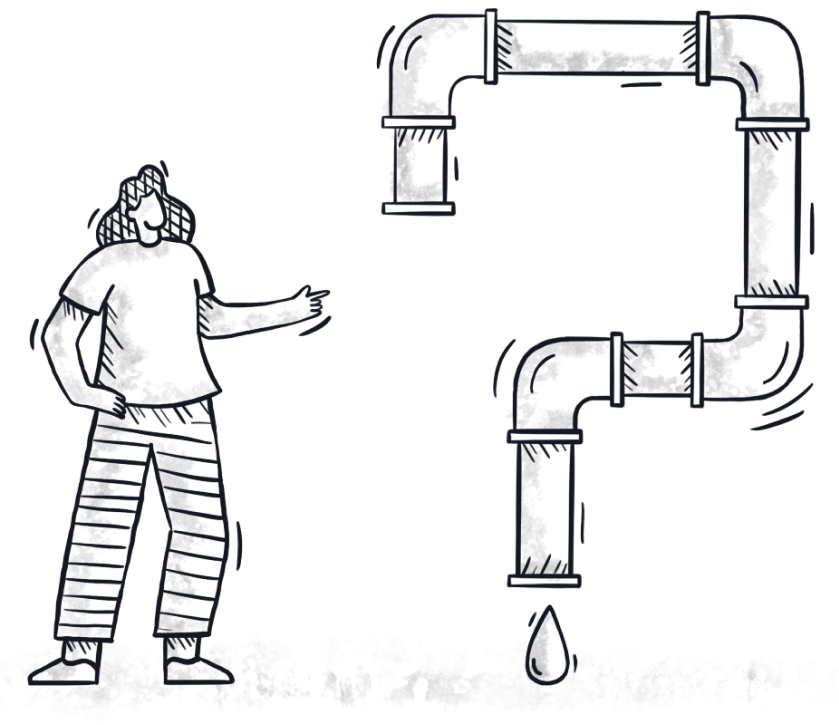Inclusive Planning and Participation
Inclusive planning and participation are key ingredients to achieve sustainability in humanitarian interventions. The approach actively involves and empowers affected communities to regain control over their lives. It also ensures that host communities are informed of any ongoing activities. Inclusive planning helps to ensure that different needs and services along the entire sanitation disposal chain are addressed. There are different levels of participation: inform, consult, involve, collaborate and empower. Participation is an interactive process and incorporates regular feedback loops (‘consult, modify, consult’). Great care should be taken when planning to consider the humanitarian principles of impartiality, neutrality and independence.
-
- Base the planning processes on consultation, meaningful participation and coordination with others, ensuring all the actors from affected communities are represented.
-
- Seek a dialogue with host communities and assess the scope of their inclusion.
-
- Understand what people are currently experiencing, their level of trauma, motivation, capacity and availability to participate. Agree on strengths as well as needs in terms of psychological support or capacity building. Make enough time for building trust, consensus, dialogue and involvement.
-
- Give feedback to the community to validate planned activities and crosscheck their perceptions. People cannot participate if they do not have access to information about the response or the opportunity to question and debate it.
-
- Document decisions and decision-making processes for the Operation and Management Plan and to demonstrate transparency and support Accountability.
-
- Identify opportunities to hand over control to affected communities throughout the response.
-
- Employ participatory information-gathering techniques such as Participatory Learning and Action (INTRAC 2017) techniques or visual methods such as Community Mapping.
-
- Apply demand-responsive approaches to planning and managing inclusive services, e.g. CLUES (Lüthi et al. 2012), the URD Handbook (Group URD 2009), or the Compendium of Hygiene Promotion in Emergencies (Gensch et al. 2022 Chapter E).
-
- Focus on the user interface and onsite storage (i.e. toilets and single pits or latrines for rapid response) and use the Sani Tweaks approach of ‘consult-modify-consult’. Consult throughout the entire sanitation service chain in the stabilisation and recovery phase. The aim is to ensure that communities develop ownership. The Sani Tweaks project provides five design considerations to address before any latrine design work is undertaken. For transport, treatment, reuse and disposal, select Appropriate Technologies that fit with local O&M skills, Financial Resources, and Physical Site Conditions.
Inclusive planning built on participation and regular community/stakeholder consultation is essential because if crisis-affected populations can use their capacities and help to define the solutions their needs are more likely to be met.
The Sphere Handbook (Sphere Association 2018) also emphasises the importance of inclusive planning: “Ensure representation is inclusive, involving the participation and engagement of communities and people affected by crisis at all stages of the work. Give attention to groups or individuals historically excluded from power and decision-making processes”. Inclusive planning should also consider host communities to ensure equity and identify opportunities to address general needs along the humanitarian-development nexus.
People’s level of engagement will depend on their motivation and capacity to engage as well as the opportunities given to participate. The crisis-affected population will not be all the same and it is vital to understand the differences that exist as well as the factors that separate and unite people. Working with existing community organisations can increase their engagement; key individuals from community organisations can act as representatives for others, broadening the scope of inclusion. Strengthened community bonds can enable the affected population to collaborate with or lead the emergency response in partnership with response teams.
Involving affected communities is crucial in all phases of the response.
At the beginning of an emergency, people need vital information about how to protect themselves and where to get help (inform). However, there is always time to ask people about what they need and as time goes on, this consultation should broaden and deepen to help shape Sanitation programme activities (consult). Early consultation can be a better use of time than making inappropriate decisions later. In the early stages of an acute response, consultation might only be possible with limited numbers of affected people. Over time, there will be more opportunities for more people and groups to become involved in decision-making. But even at the start of an emergency there will be opportunities to involve people in making decisions about e.g. the design of facilities and to provide feedback about the programme (involve). As communities begin to organise, they can choose to partner with responders, taking the initiative and proposing improvements (collaborate). Empowerment is usually seen as the highest level and involves communities working collectively to gain control over their lives and make decisions.
Consider various methods to enhance community engagement, including community scorecards, community mapping or focus group discussions (Gensch et al. 2022 Chapter T). Any truly inclusive planning process should follow the planning phases outlined below (Groupe URD 2009):
-
- Understand the dynamics and structures within the community (community mapping of management structures).
-
- Initiate the project design: who needs to be involved, who will manage the process, and who has decision-making power? Discuss the selection criteria and details of who will benefit from the programme.
-
- Create an inclusive task force that represents all members of a target community.
-
- Discuss and prioritise possible solutions and ensure that the solutions are specific and implementable.
-
- Encourage dialogue between people of concern and surrounding populations/host communities to develop joint activities based on common goals and interests, thereby fostering peaceful coexistence.
-
- Produce an action plan that includes activities, resources and responsibilities.
-
- Mobilise from planning to implementation: mobilise resources, mobilise participation for project implementation and implement the action plan.
-
- Evaluate the planning process and document the results.
The resources provided (see right column) give a step-by-step approach on how to plan with rather than for communities.
-
Bibliography
The Sphere Handbook: Humanitarian Charter and Minimum Standards in Humanitarian Response. 4th Edition
Participation Handbook for Humanitarian Field Workers
Compendium of Hygiene Promotion in Emergencies
Closing the Loop – Effective Feedback in Humanitarian Contexts
Oxfam's Water, Sanitation and Hygiene Promotion Resources – Running Programms: Urine Diversion Dehydration Toilet
Participatory Learning and Action Plan (PLA)
Key Resources and Tools
Participation Handbook for Humanitarian Field Workers
Ways of optimising participation of crisis-affected people in humanitarian action.
Oxfam's Water, Sanitation and Hygiene Promotion Resources – Running Programms: Urine Diversion Dehydration Toilet
The SaniTweaks Project provides a checklist with questions to ask during latrine and sanitation intervention…
Community-led Urban Environmental Sanitation (CLUES)
A field-tested, participatory, urban, multi-actor planning guidance accounting for different WASH services.
Compendium of Hygiene Promotion in Emergencies
Overview and guidance on community engagement and participation
Engagement of Crisis-Affected People in Humanitarian Action
Summary paper on community engagement in emergencies
Guiding Principles for Community Engagement in WASH Infrastructures’ Planning and Design
Guiding principles for community engagement in WASH infrastructures planning and design
Engagement of Crisis-Affected People in Humanitarian Action
Compilation of over fifty tools and methods useful for hygiene promotion in emergencies
Related Common Questions
Found what you were looking for?
Still have questions?
You could not find the information you were looking for? Please contact our helpdesk team of experts for direct and individual support.

